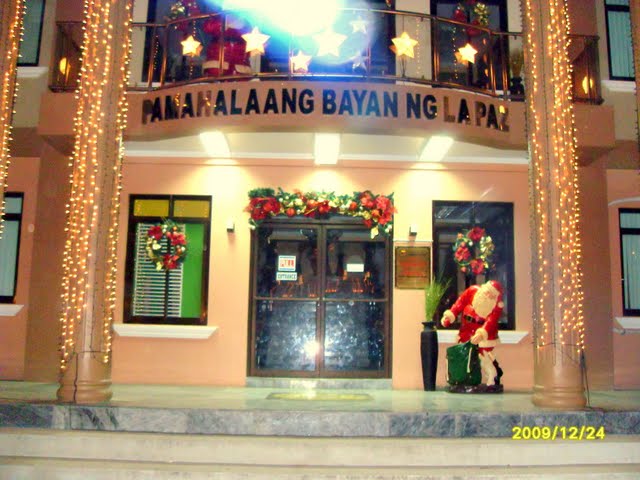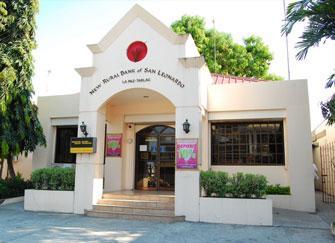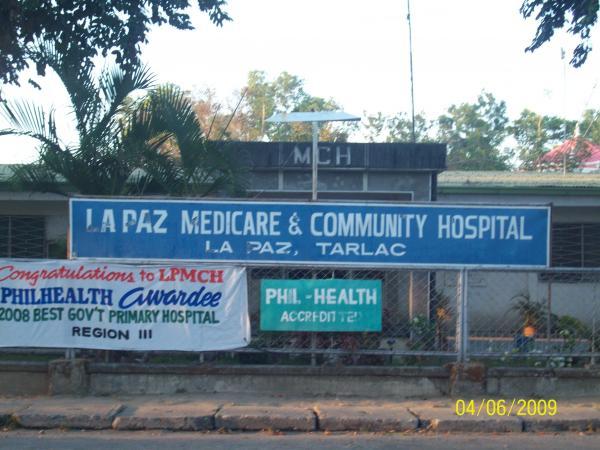History of La Paz
The early history of La Paz is told in a legend. Once upon a time there was an old, old pueblo called "Cama Juan" situated right along the bank of the Chico River bordering the province of Tarlac and Nueva Ecija. When the Chico River overflowed during a storm, a great flood swept the entire pueblo at an unholy hour when the entire populace was asleep. The flood left in its wake a picture of total devastation claiming scores of human life.
This forced the inhabitants of "Cama Juan" to evacuate the place and look for a better place to settle in. The old site (Cama Juan) is known as "Balen Melakwan" or "Abandoned Town".
The inhabitants chose a field of evergreen grass and shubbery, which they named "Matayumtayum". Hard work and determination enabled the town to prosper and in time peace and order reigned in the settlement.
Towards the end of the nineteenth century, Francisco Macabulos and Captain Mariano Ignacio selected a more centrally located site for the future town to be known as La Paz. But La Paz existed then only as a barrio of the town of Tarlac until 1892. When it was separated from the latter and rechristened in honor of its patron saint Nuestra Senora de La Paz y Buen Viaje. Its emergence as a new town gave its citizens a chance to run their own government with Martin Aquino as the first Governadorcillo.
In due time, due to the heroic exploits of its own force La Paz was made first seat of the revolutionary government of the province of Tarlac during the Spanish regime with Gen. Francisco Makabulos as its first provincial governor.
La Paz is politically subdivided into 21 barangays:
* Balanoy
* Bantog-Caricutan
* Caramutan
* Caut
* Comillas
* Dumarais
* Guevarra
* Kapanikian
* La Purisima
* Lara
* Laungcupang
* Lomboy
* Macalong
* Matayumtayum
* Mayang
* Motrico
* Paludpud
* Rizal
* San Isidro (Pob.)
* San Roque (Pob.)
* Sierra
Francisco Macabulos
Francisco Macabulos (September 17, 1871-April 30, 1922) was a Filipino patriot who led Katipunan revolutionary forces during the Philippine Revolution against Spain in 1896.
He was born in La Paz, Tarlac to Alejandro Macabulos of Lubao, Pampanga and Gregoria Soliman. He organized the first Katipunan group there after he was inducted into the secret society by Ladislao Diwa in 1896. When the revolution broke out in 1898, he liberated Tarlac and established town councils in areas he liberted.
Macabulos refused to honor the Pact of Biak-na-Bato, which called for a truce with the Spanish colonial government, and continued operations in Central Luzon. But on January 14, 1898, he disbanded his troops and accepted amnesty after receiving P14,000 as part of Spanish reparations to Filipino revolutionaries. Macabulos distributed the money to his men.
However, he resumed operations against the Spanish and on April 17, 1898, an assembly of citizens representing the town councils Macabulos established, calling themselves representatives of Central Luzon, met and drafted a provisional constitution. They created a government that was to exist until a revolutionary government is established. Macabulos' government was headed by a general executive committee, consisting of a president, vice president, secretary of interior, secretary of war and a secretary of the treasury.
Macabulos dissolved his government after the First Philippine Republic was created by the Malolos Constitution, which he also signed. He also led his men to free nearby provinces, like Pangasinan where he led revolutionists in the Battle of Dagupan
TOURISM
The feast of Nuestra De Senora De La Paz every January 23 to 24. Other tourism attractions in the town include Macabulos ancestral house, Nuestra Senora De La Paz Church, and Chico River Grill Station.
skip to main |
skip to sidebar

LaPaz, Tarlac Philippines








Lapazenians
SULONG LAPAZ!!!
"BLOG NG BAYAN"
"SIGAW NG MAMAMAYAN"
email us:
tarlaclapaz@yahoo.com
Followers
Blog Archive
Who Will Be The Next Lapazenian's Mayor Of 2010?
Municipality Of LaPaz
LaPaz, Tarlac Philippines
LaPaz Okra

LaPaz Five Star Bus Station
LaPaz New Rural Bank of San leonardo

Lapaz Medicare

Belenismo LaPaz Entry
LaPaz Plaza
